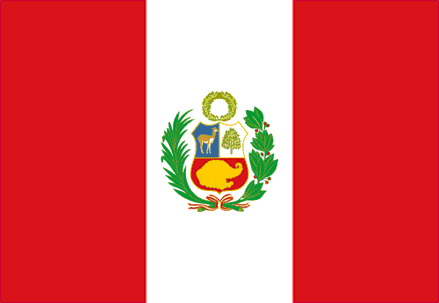
Peru


President: Ollanta Humala (2011)
Prime Minister: Pedro Cateriano (2015)
Land area: 494,208 sq mi (1,279,999 sq km); total area: 496,223 sq mi (1,285,220 sq km)
Population (2014 est.): 30,147,935 (growth rate: 0.99%); birth rate: 18.57/1000; infant mortality rate: 20.21/1000; life expectancy: 73.23
Capital and largest city (2011 est.): Lima, 9.13 million
Other large city: Arequipa, 804,000
Monetary unit: Nuevo sol (1991)
Geography
Peru, in western South America, extends for nearly 1,500 mi (2,414 km) along the Pacific Ocean. Colombia and Ecuador are to the north, Brazil and Bolivia to the east, and Chile to the south. Five-sixths the size of Alaska, Peru is divided by the Andes Mountains into three sharply differentiated zones. To the west is the coastline, much of it arid, extending 50 to 100 mi (80 to 160 km) inland. The mountain area, with peaks over 20,000 ft (6,096 m), lofty plateaus, and deep valleys, lies centrally. Beyond the mountains to the east is the heavily forested slope leading to the Amazonian plains.
Government
Constitutional republic.
History
Peru was once part of the great Incan Empire and later the major vice-royalty of Spanish South America. It was conquered in 1531–1533 by Francisco Pizarro. On July 28, 1821, Peru proclaimed its independence, but the Spanish were not finally defeated until 1824. For a hundred years thereafter, revolutions were frequent; a new war was fought with Spain in 1864–1866, and an unsuccessful war was fought with Chile from 1879 to 1883 (the War of the Pacific).
Peru emerged from 20 years of dictatorship in 1945 with the inauguration of President José Luis Bustamente y Rivero after the first free election in many decades. But he served for only three years and was succeeded in turn by Gen. Manuel A. Odria, Manuel Prado y Ugarteche, and Fernando Belaúnde Terry. On Oct. 3, 1968, Belaúnde was overthrown by Gen. Juan Velasco Alvarado. In 1975, Velasco was replaced in a bloodless coup by his prime minister, Gen. Francisco Morales Bermudez, who promised to restore civilian government. In elections held on May 18, 1980, Belaúnde Terry, the last civilian president, was elected president again.
The Maoist guerrilla group Shining Path, or Sendero Luminoso, began their brutal campaign to overthrow the government in 1980. The military's subsequent crackdown led to further civilian human rights abuses and disappearances. A smaller rebel group, Tupac Amaru, also fought against the government. About 69,000 people were killed during the 1980–2000 wars between rebel groups and the government. The deaths were carried out by the rebels (54%) as well as the military (30%); other militias were responsible for the remainder
Credit : http://www.infoplease.com/country/peru.html

